
Chamaemelum nobile - Plant
(MRP Inclusive of all taxes)
- Shipping ₹79 for entire order
- Dispatch in 7 days
- Country of origin: India

(MRP Inclusive of all taxes)
 Save 29%
Save 29%
Air Purifier Money Plant with Pot The Air Purifier Money Plant, also known as Pothos or Epipremnum aureum, is a stunning indoor plant that...
View full details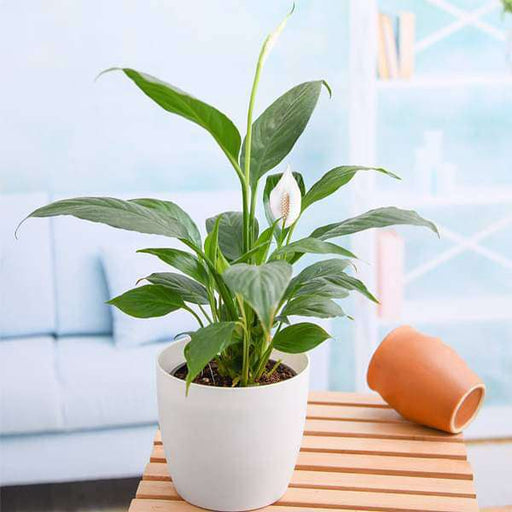
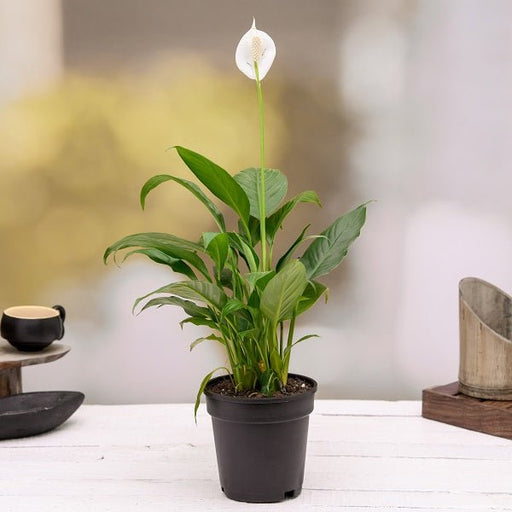 Save up to 15%
Save up to 15%
Peace Lily, Spathiphyllum - Plant The Peace Lily, scientifically known as Spathiphyllum, is a stunning houseplant celebrated for its elegant white...
View full details
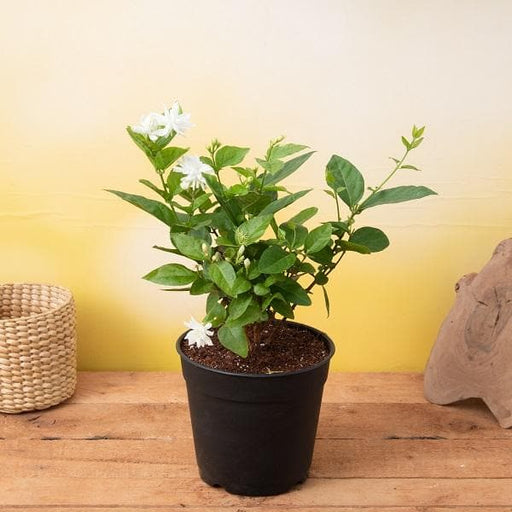 Save 25%
Save 25%
Jasminum sambac, Mogra, Arabian Jasmine - Plant Jasminum sambac, commonly known as Mogra or Arabian Jasmine, is a fragrant flowering plant...
View full details
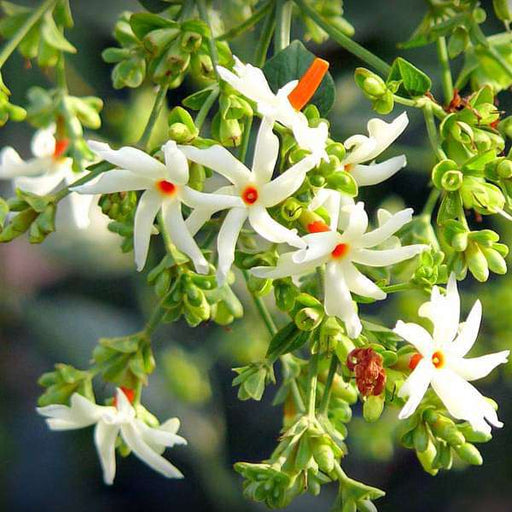 Save 18%
Save 18%
Combo Constituents Includes the Parijat Tree (Night-Flowering Jasmine), a culturally significant plant with fragrant flowers. Description The Pari...
View full details
 Save 25%
Save 25%
Miniature Rose, Button Rose (Any Color) - Plant The Miniature Rose, also known as the Button Rose, is a charming and compact flowering plant that ...
View full details Save 25%
Save 25%
Damascus Rose, Scented Rose (Any Color) - Plant The Damascus Rose, also known as Rosa damascena, is a timeless symbol of beauty and romanc...
View full details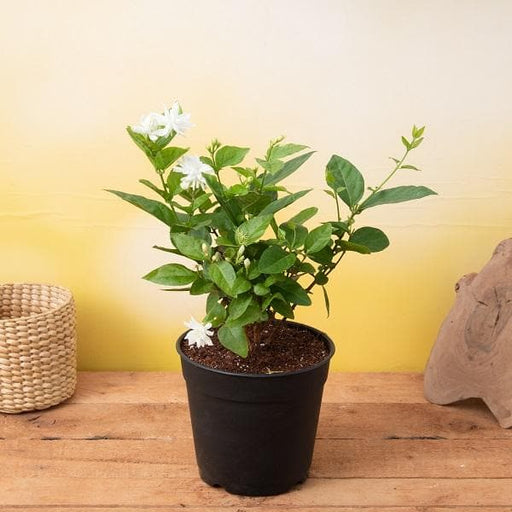
 Save 17%
Save 17%
Beautiful Fragrant Mogra, Arabian Jasmine Plant with Pot The Beautiful Fragrant Mogra, also known as Arabian Jasmine (Jasminum sambac), is...
View full details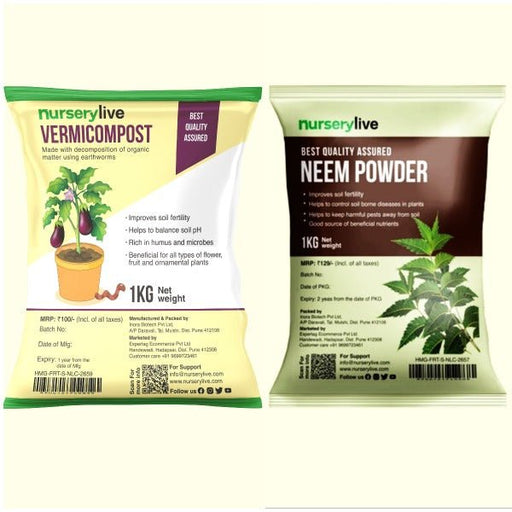 Save 15%
Save 15%
Pack of Vermicompost and Neem Cake for House Plants Transform your indoor garden with our premium Pack of Vermicompost and Neem Cake, spec...
View full details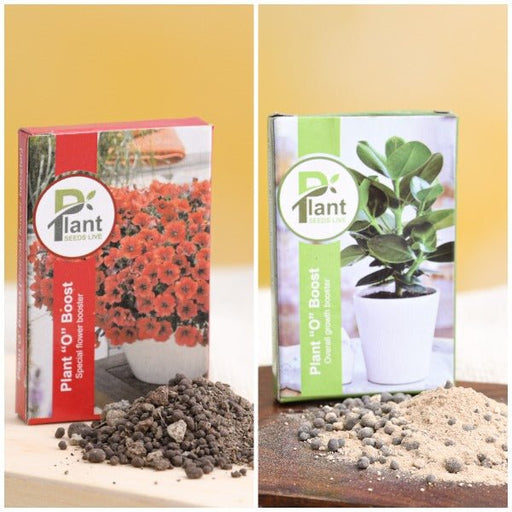
Pack of Plant Growth and Flower Boosters Unlock the full potential of your garden with our Pack of Plant Growth and Flower Boosters! This ...
View full details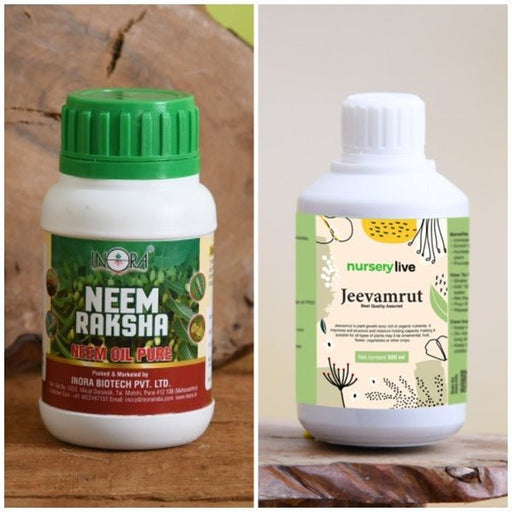 Save 38%
Save 38%
Combo of Jeevamrut and Neem Raksha for Easy Growth and Protection of Houseplants Transform your indoor garden with our exclusive combo of ...
View full details Save 22%
Save 22%
Plant Nutrients Kit (Pack of 16) for a Healthy Garden Transform your garden into a lush paradise with our Plant Nutrients Kit, featuring 1...
View full details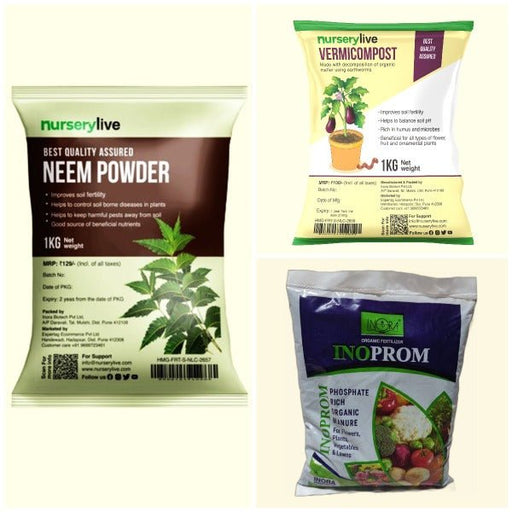 Save 16%
Save 16%
Combo of Top Plant Fertilizers Elevate your gardening game with our exclusive Combo of Top Plant Fertilizers, featuring two bags of premiu...
View full details Save 24%
Save 24%
Pack of 4 Additives to Make Soil Healthy and Nutrient Rich Transform your garden into a thriving ecosystem with our Pack of 4 Additives de...
View full details Save 30%
Save 30%
Transform your gardening experience with our premium Combo of Perlite and Vermiculite. This unique blend is designed to enhance soil aeration and ...
View full details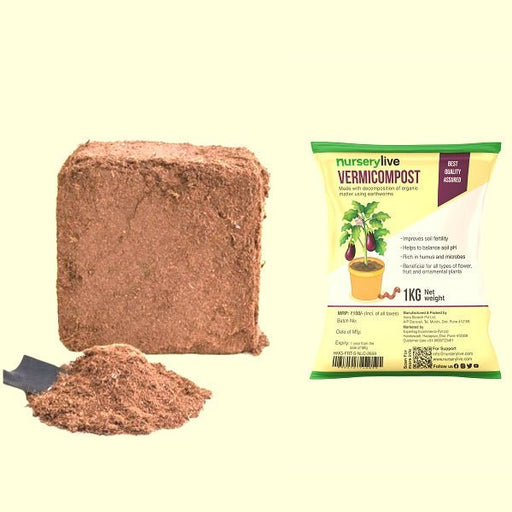 Save 27%
Save 27%
Combo of 2 Vermicompost and Cocopeat - Enrich Your Soil Naturally! Transform your garden into a thriving ecosystem with our Combo of 2 Ver...
View full details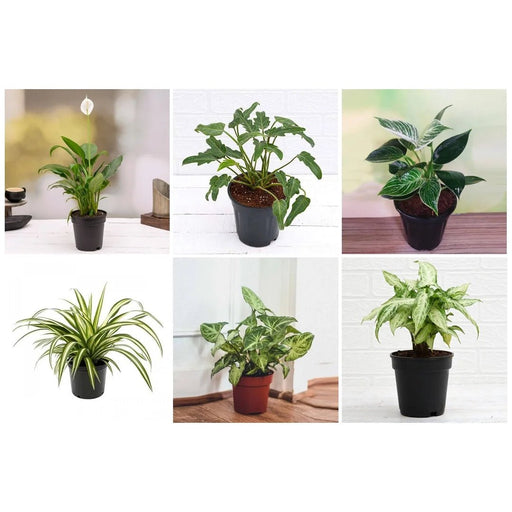
 Save 35%
Save 35%
Best 6 Plants for Perfect Indoor Garden Transform your living space into a lush oasis with our curated collection of the Best 6 Plants for a...
View full details
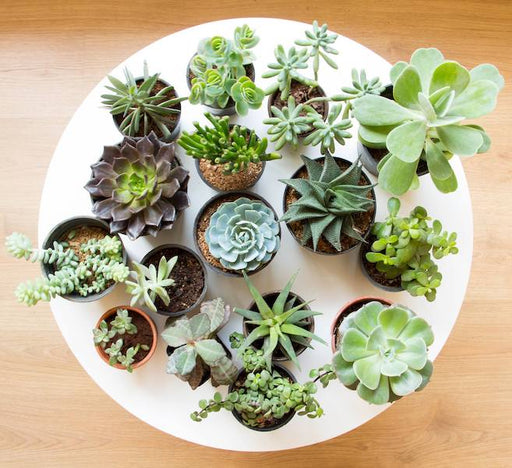 Save up to 50%
Save up to 50%
Mini Succulent Garden Pack Transform your space with our Mini Succulent Garden Pack, featuring a delightful collection of 4 any variety beautiful s...
View full details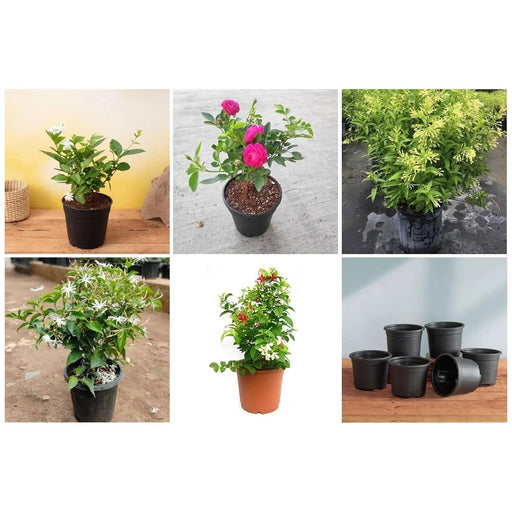
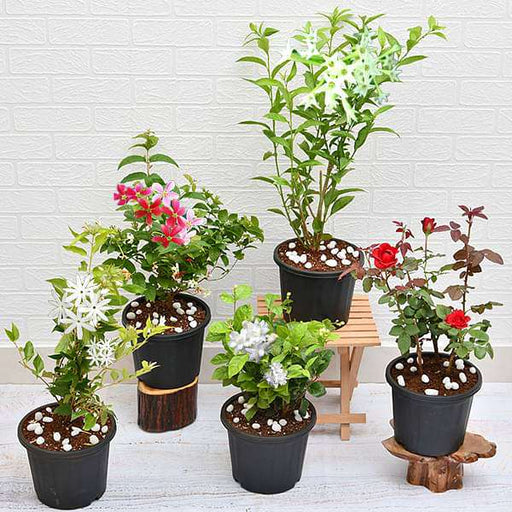 Save 30%
Save 30%
5 Best Fragrant Plants Transform your garden or indoor space into a fragrant paradise with our curated selection of the 5 Best Fragrant Plants. Th...
View full details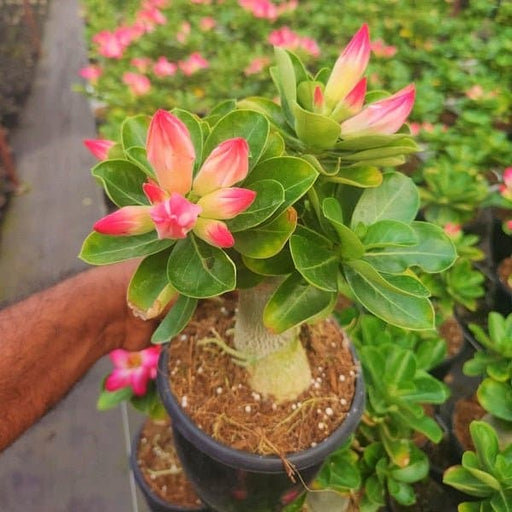
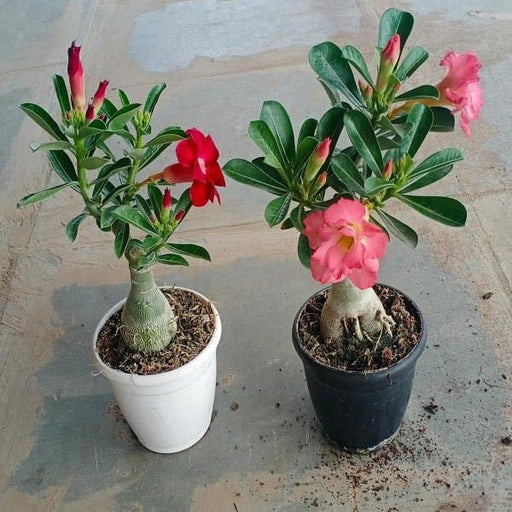 Save 24%
Save 24%
Set of 2 Bonsai Looking Grafted Adeniums Transform your indoor or outdoor space with our exquisite Set of 2 Bonsai Looking Grafted Adenium...
View full details Save 45%
Save 45%
Top 4 Die Hard Succulents Pack Transform your indoor or outdoor space with our Top 4 Die Hard Succulents Pack, featuring a curated selecti...
View full details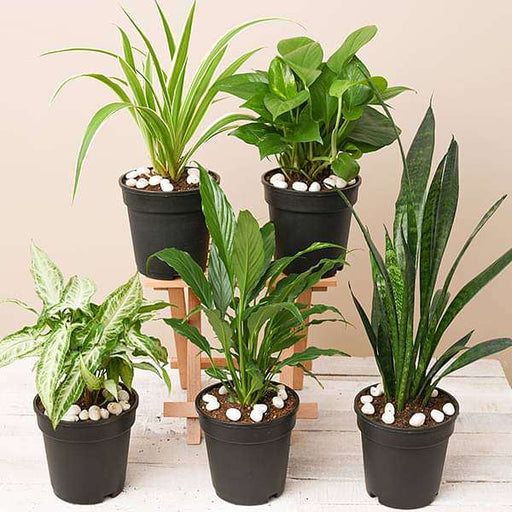
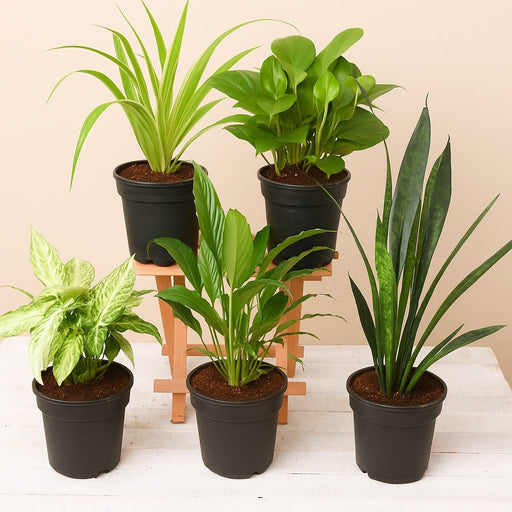 Save 30%
Save 30%
5 Best Indoor Plants Pack Transform your living space into a lush oasis with our '5 Best Indoor Plants Pack.' This carefully curated collection fe...
View full details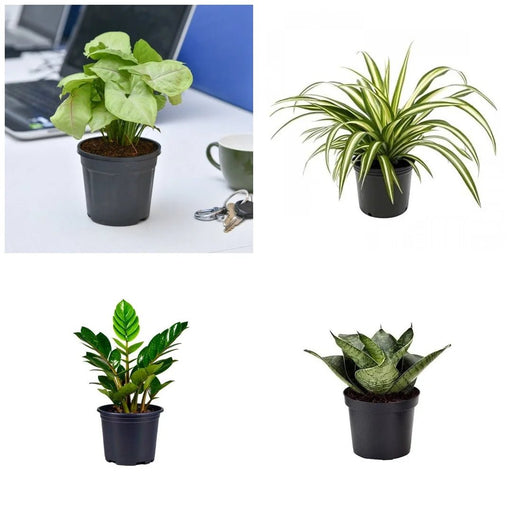
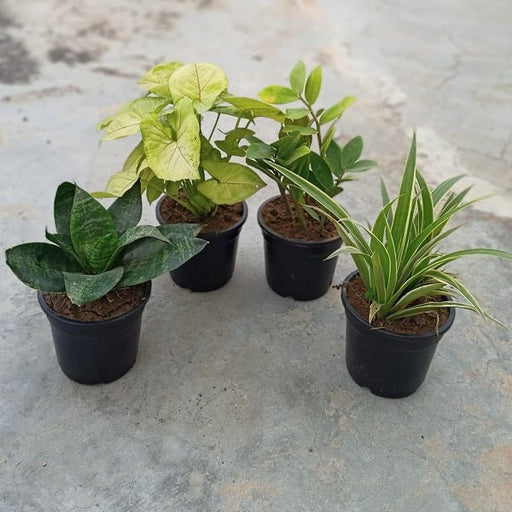 Save 25%
Save 25%
Set of 4 Evergreen Air Purifier Plant Pack Transform your indoor space into a lush, green oasis with our Set of 4 Evergreen Air Purifier Pla...
View full details| SrNo | Item Name |
|---|---|
| 1 | Chamaemelum nobile - Plant |
Chamaemelum nobile, commonly known as Roman Chamomile, is a perennial herb renowned for its aromatic flowers and soothing properties. This low-growing plant features daisy-like blooms that emit a sweet, apple-like fragrance, making it a favorite in gardens and herbal remedies alike. With its rich history dating back to ancient Rome, this versatile herb has been cherished for its calming effects and culinary uses.
What makes Roman Chamomile special is its ability to thrive in various environments while providing numerous health benefits. Its essential oil is widely used in aromatherapy, promoting relaxation and reducing stress. Additionally, the plant attracts beneficial insects, making it an excellent companion for other garden plants.
One of the standout features of Chamaemelum nobile is its resilience. This hardy herb can tolerate poor soil conditions and drought, making it an eco-friendly choice for sustainable gardening. Its ground-hugging habit also helps prevent soil erosion, contributing positively to the environment.
If you think Chamaemelum nobile is just a pretty face, think again! This charming little plant, also known as Roman chamomile, is a powerhouse of benefits. From soothing your tummy troubles to calming your nerves, it’s like having a personal wellness guru in your garden. Plus, its delightful aroma can turn any dull day into a fragrant fiesta. Who knew a plant could be such a multitasker?
Caring for Chamaemelum nobile is like nurturing a diva—she needs just the right amount of sunlight, water, and love. This plant thrives in well-drained soil and prefers a sunny spot, so make sure to give her the VIP treatment. A little pruning here and there will keep her looking fabulous, and don’t forget to chat with her; plants love a good gossip session!
The uses of Chamaemelum nobile are as diverse as a Swiss Army knife! From herbal teas that can make you feel like royalty to essential oils that can turn your home into a spa, this plant is a jack-of-all-trades. You can even toss some dried flowers into your bath for a luxurious soak. Who needs a fancy vacation when you have this botanical wonder?
Sip, sip, hooray! Chamaemelum nobile tea is the ultimate comfort drink. Brewed from the flowers of this delightful plant, it’s like a warm hug in a cup. Not only does it taste divine, but it also boasts calming properties that can help you unwind after a long day. So, grab your favorite mug and let this herbal elixir work its magic!
If you’re looking for a way to elevate your self-care routine, look no further than Chamaemelum nobile essential oil. This aromatic gem is perfect for diffusing, adding to bathwater, or even mixing into your favorite lotion. Its soothing scent can transport you to a serene meadow, making it a must-have for anyone seeking a little zen in their life.
Growing Chamaemelum nobile is like hosting a garden party—everyone’s invited, but some guests are a bit more particular. This plant loves well-drained soil and plenty of sunshine, so make sure to roll out the red carpet for her. With the right conditions, she’ll reward you with a lush display of flowers that will have your neighbors green with envy.
Propagating Chamaemelum nobile is easier than pie—just take some cuttings or divide the roots, and voilà! You’ll have new plants sprouting up in no time. It’s like cloning your favorite plant without the sci-fi drama. Just remember to give them a little TLC, and soon you’ll have a whole army of chamomile ready to take over your garden.
While Chamaemelum nobile is generally pest-resistant, it’s not immune to the occasional uninvited guest. Aphids and spider mites might try to crash the party, but with a little vigilance and some natural remedies, you can send them packing. Think of it as your plant’s bouncer—keeping the riffraff out and ensuring a peaceful garden vibe.
Harvesting Chamaemelum nobile is like picking the ripest fruit from the tree—timing is everything! The best time to snip those lovely flowers is when they’re in full bloom, just before they start to fade. This ensures you get the most potent flavor and aroma. So, grab your scissors and channel your inner florist; it’s time to reap the rewards of your gardening efforts!
Chamaemelum nobile loves a good social life, so why not pair her with some fabulous companions? Plants like lavender and rosemary not only complement her aesthetic but also create a harmonious garden ecosystem. Plus, they’ll all get along famously, making your garden the hottest spot in the neighborhood.
The history of Chamaemelum nobile is as rich as a fine wine. Used since ancient times by the Romans for its medicinal properties, this plant has been a beloved staple in herbal remedies for centuries. It’s like the wise old sage of the plant world, offering wisdom and wellness to those who seek it. So, when you grow this plant, you’re not just cultivating a garden; you’re nurturing a piece of history!
Chamaemelum nobile, also known as Roman chamomile, is a delightful perennial herb that brings a touch of charm to any garden. With its daisy-like flowers and aromatic leaves, it’s not just a pretty face; it’s also a soothing herbal remedy. Think of it as nature’s little stress-buster, ready to help you unwind after a long day.
Growing Chamaemelum nobile is as easy as pie—chamomile pie, that is! This sun-loving plant thrives in well-drained soil and prefers a little neglect. Just give it some sunlight, water it occasionally, and watch it flourish. Before you know it, you’ll have a fragrant patch that’s perfect for tea or simply admiring.
Chamaemelum nobile is like a Swiss Army knife of herbal benefits! It’s known for its calming properties, making it a go-to for soothing anxiety and promoting sleep. Plus, it’s great for digestion and can even help with skin irritations. Who knew a little plant could pack such a punch in the wellness department
Absolutely! Chamaemelum nobile is a superstar in the tea world. Just steep those lovely flowers in hot water, and voilà! You’ve got yourself a cup of chamomile tea that’s perfect for winding down. It’s like a warm hug in a mug, ready to chase away your worries and help you relax.
Fear not, plant lovers! Chamaemelum nobile is not an invasive villain in the garden. It’s a well-behaved perennial that won’t take over your flower beds. Just give it some space, and it will happily coexist with your other plants, adding a touch of charm without the drama of an invasive species.
Caring for Chamaemelum nobile is a breeze! It loves well-drained soil and a sunny spot, so make sure it gets plenty of light. Water it moderately, and don’t stress about pruning—just a little tidying up will do. With minimal fuss, you’ll have a thriving plant that rewards you with beauty and fragrance.
Chamaemelum nobile puts on its floral show from late spring to early summer. Those cheerful, daisy-like flowers will brighten your garden and attract pollinators like bees and butterflies. It’s like a garden party, and everyone’s invited! Just sit back, relax, and enjoy the floral festivities.
You bet! Chamaemelum nobile is a natural skincare superstar. Its anti-inflammatory properties make it great for soothing irritated skin and reducing redness. You can infuse it in oils or use it in homemade lotions. Just remember, your skin deserves the best, and this little herb is ready to pamper it!
Chamaemelum nobile is generally safe for pets, but let’s not throw a chamomile party just yet! While it’s non-toxic, some pets might have sensitive tummies. Always keep an eye on your furry friends and consult your vet if they decide to munch on your lovely chamomile plants. Better safe than sorry!
Propagating Chamaemelum nobile is as easy as pie—chamomile pie, of course! You can do it through seeds or division. Just sow those seeds in spring or divide established plants in early spring or fall. Before you know it, you’ll have a whole army of chamomile ready to take over your garden!
Chamaemelum nobile is pretty tough, but it can attract a few pesky visitors like aphids and spider mites. Don’t worry; a gentle spray of water or a natural insecticidal soap will send them packing. With a little vigilance, your chamomile will remain the belle of the garden ball, free from unwanted guests.
Yes, you can! Growing Chamaemelum nobile indoors is like having a mini herb garden right in your kitchen. Just ensure it gets plenty of sunlight and a pot with good drainage. With a little love and care, you’ll have fresh chamomile at your fingertips, ready for tea or a fragrant addition to your home.